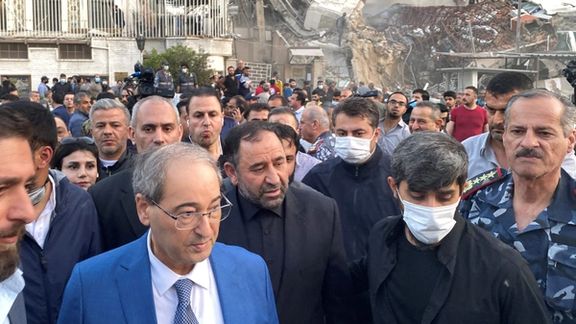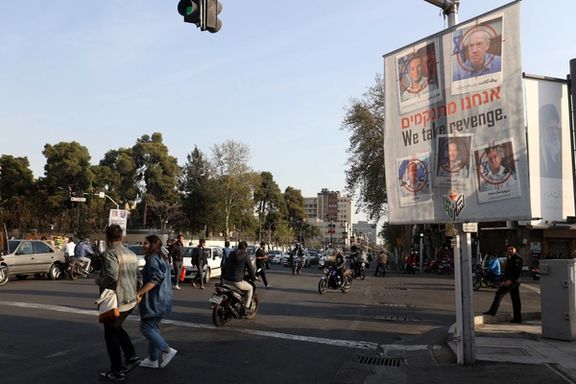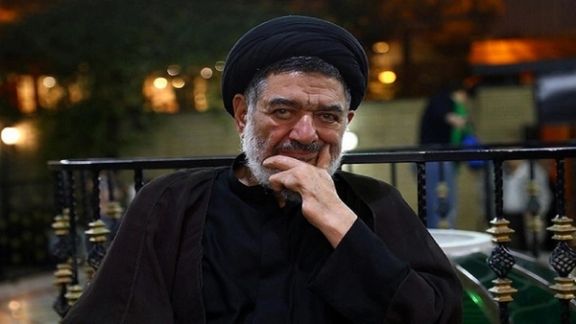Syria's Future Uncertain As Israel And Iran Approach Open Conflict

At 17:00 hours local time of Monday April 1, 2024, a building adjacent to the main Islamic Republic of Iran’s embassy was turned into rubble in the aftermath of a mass explosion.

At 17:00 hours local time of Monday April 1, 2024, a building adjacent to the main Islamic Republic of Iran’s embassy was turned into rubble in the aftermath of a mass explosion.
The precision strike successfully took the lives of half a dozen members of the regime’s Islamic Revolutionary Guards Corps (IRGC) top brass.
The culprit? According to the Syrian Defence Ministry, an Israeli F-35 Jet fired several missiles towards the building from the direction of the Golan Heights. Many commentators and pundits have been opining over the past 24 hours that Israel and Iran may very well be on the verge of plunging the entire region into unprecedented turmoil.
No headline could perhaps better encapsulate such sentiments than that of the Wall Street Journal: “Israel-Iran Conflict Threatens to Spill into Open Conflict.”
The key phrase in the game being “Open Conflict”. Despite the solemn promise of Iran’s Supreme Leader, Ali Khamenei to exact revenge, it is doubtful that “open conflict” between Iran and Israel would escalate into “total war.”
In fact, “the shadow war” between Iran and Israel may very well continue but at the cost of taking many lives of those who fight on behalf of many chapters of Iran’s Shia Imperium.
Although such an escalation may engage Israel in a total war with Hezbollah and Iran’s proxies in Syria, it is the Syrian state and the regime of President Bashar al-Assad that could be pushed to the cliffhanger of annihilation if cool heads do not prevail.

Indeed, Syria, which was created per the 1919 Paris Treaty that “ended” WWI, might as well cease to exist should the conflict between Iran and Israel become the very “open conflict” that many fear. Whilst not discounting the possibility of the outbreak of a total war between Hezbollah and Israel, one cannot be sure if the Iranian regime is ready, or willing, to engage the Israeli troops head on. History, in fact, shows that the Iranian mullahs are traditionally loath to engage the Israelis directly.
Certainly, the rise of the Islamic regime of Iran in 1979, just after Egypt had signed a peace treaty with Israel, introduced an unprecedented dynamic into the Arab Israeli conflict. But the Shadow War between the revolutionary Mullahs and Israel predates the Mullahs’ 1979 power takeover in Tehran.
When the founder of the Islamic Republic, Ayatollah Ruhollah Khomeini, declared war on the Western-backed Shah of Iran in 1960-1963, his sermons were filled with anti-Israeli and anti-semitic rhetoric. Khomeini’s definitive anti-Israeli stance forms the doctrinal core of the Iranian regime’s sacrosanct raison d’être and no one in power has so far dared to question it over the past 45 years.
In the 1980s, at the heat of the Iranian regime’s war with Saddam’s Iraq, Israel collaborated with the US to transfer to Iran weapons hoping that it could sway the Tehran Mullahs to Israel’s side. Yet, the Iranian regime’s ruling clerics never wavered from their efforts at sowing the seeds of Israel’s destruction in Lebanon and beyond (Treacherous Alliance: The Secret Dealings of Israel, Iran, and the US; 114-117).
In the Iranian regime’s anti-Israeli schemes, Syria has always played a key role both as a partner and a keen facilitator. The oral history of the founding of Hezbollah, however, offers a mixed picture of Iran-Syria partnership.
According to Ali Akbar Mohtashamipour (1947-2021), Iran’s then-ambassador to Damascus (1982-1986) and a godfather of Hezbollah, Khomeini was wary of Iranian troops engaging the IDF directly. Mohtashamipour recounts how Khomeini countermanded IRGC top brass’ operation to deploy troops in Syria and Lebanon against the Israeli invasion of Lebanon in 1982.

Ostensibly, Khomeini invoked the foremost need for such troops in war against Saddam’s Iraq but the main reason for Khomeini’s objections was the fact Iran did not have direct access to Syria. However, it may very well be true that Khomeini was wary of a direct confrontation with the Israelis.
Over a decade after Khomeini’s death, the Islamic Republic did manage to get direct land access to Syria and the Lebanese Hezbollah through Iraq, thanks to President George W. Bush’s ouster of Saddam Hussein. As the United States failed to establish a strong central government in Iraq. The Iranian regime’s praetorian guard, the IRGC, helped create a dozen proxy militia groups and marked the first major turning point in the establishment of Iran’s Shia Imperium.
Syria became a bridge between these proxy militias and the Hezbollah of Lebanon. As Mohtashamipour and IRGC top brass were advocating for direct confrontation with Israel in Lebanon, they did also run into opposition from then Syrian President Hafez al-Assad.
It was as if Khomeini and Assad had conspired to restrain their anti-Zionist zeal. Assad, like Khomeini but in his own way, sought to prevent Syria plunging into direct confrontation with Israel on the account of becoming Iranian troops’ staging ground. Contemporary observers in 1986 vividly grasped the fact that Assad believed his Russian and Iranian allies had cost him and his regime dearly in his relations with (rich) conservative Arab states.
The same observers noted at the time that Hafez al-Assad, the father of present Syrian President Bashar al-Assad, viewed Lebanon as "instrumental" in Syria’s struggle for hegemony in the region and its ongoing conflict with Israel, but he did not allow anyone to undermine Syria’s primacy.
In that context, as long as the elder Assad was at the helm in Syria, he never allowed Hezbollah to become more than a proxy partner of the Islamic Republic with a defined role as a militant arbiter in Lebanese politics. In the meantime, Hafez al-Assad sent Syrian troops to fight alongside the US and Arab allies to expel Saddam from Kuwait in 1990 and entered a quasi détente with Israel.
Eleven years after Hafez al-Assad’s death, the 2011 Arab Spring, the Syrian Civil War, and the rise of ISIS transformed the balance of power in the Middle East forever. With Saddam’s Iraq out of the picture and Egypt in turmoil, Iran, Saudi Arabia, and Turkey rose to an unprecedented pre-eminence in the region.
The younger Assad, Bashar, desperate to preserve his government in Damascus against a surging muting in the ranks of his army, appealed to the Lebanese Hezbollah, Iran’s IRGC, and Russia for assistance.
The success of the combined Hezbollah, Iran’s IRGC, and Russia’s Wagner have restored much of Syria back to Assad regime but at the high price of the solid control of Iranian proxy militant groups and Hezbollah.
The Assad regime, for all intents and purposes, rules only in name and exists only at the pleasure of Iran’s IRGC and the Hezbollah of Lebanon.
In fact, even though one could be accused of “conspiratorial speculations”, there could be a “tacit pact” between Bashar al-Assad and the Israelis aimed at eliminating the Iranian militia and their IRGC masters in Syria, so that the Assad clan can regain its historically righteous place.
This speculation, which I risked uttering in an interview with Iran International on Saturday March 30th, was part of an analysis that I offered on Israel’s precision strike against such militants and their Hezbollah handlers in Aleppo on Friday 29 March.
According to this analysis, Syria’s becoming a battleground between Iran, its proxies, and Israel can effectively end its existence as a state and with it Assad's rule.
Despite Syrian government’s strenuous objections against Israel’s strikes, and reports of its agreement to give Hezbollah advanced Russian made S-300 air defense system, Bashar al-Assad’s regime needs peace and funds to rebuild the territory that it controls.
In fact, giving Hezbollah advanced Russian air defense could be a desperate maneuver to discourage Hezbollah from diversifying its sources and opening a second major front against Israel through Syria.
It is such a reconstruction that can restore Assad’s sovereignty and enable it to govern Syria free from the control of the Iranian proxies. The funds, insofar as the post-Civil War ruined urban and rural Syria is concerned, can only come from rich Arab states such as Saudi Arabia and Qatar.
No country, even Syria’s conservative Arab brothers, would dispense a penny in a country that is anything but a battleground in the Iranian Israeli conflict.
In the lead up to the 1978 peace accord with Israel, Anwar Sadat famously said: “Russians can give you arms, but only the United States can give you a solution” – though he uttered these words when Russia and the US were the sole superpowers of the Cold War.
In the multi-polar world of today where a hesitant and isolationist United States and its allies are grappling to help Ukraine against Russia, and have been incapable of deterring Yemeni Houthi from disrupting free and safe international maritime in the Red Sea, Bashar al-Assad of Syria may be desperate to find a solution before Syria is ravaged beyond recognition by yet another war.